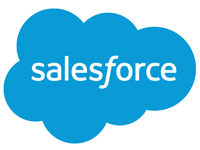
There’s been way too much obsessing about how artificial intelligence and machine learning will eliminate jobs. For example, 60 Minutes ran a feature on Sunday about AI venture capitalist Kai-Fu Lee, one of many stories predicting the elimination of jobs and a dystopian takeover of the world (it seems) by machines.
Lee is a persuasive voice. Having been educated in the U.S., he now resides and works in China. He is the author of AI Superpowers: China, Silicon Valley and the New World Order, among other titles.
In his 60 Minutes interview, Lee said that in 15 to 20 years, 40 percent of our jobs will be “displaceable.” Apparently, diplomatic tact and unwillingness to buck Chinese policies kept him from going all the way to saying the jobs would evaporate.
However, how AI and machine learning affect modern life, currently and in the future, is complicated, and it deserves much more than a Chicken Little reaction like, “The machines are coming!” To get the subtlety, you might not be able to do better than check out Salesforce’s Commerce Cloud announcements from the National Retail Federation show in Manhattan this week.
New Capabilities, Low Overhead
What will surprise you is not that AI and ML definitely have been making inroads into retail, but that in doing so they haven’t been taking jobs away from humans. In retail, at least, machines are creating niches that only they can fill.
Here’s what I mean. There are lots of jobs in retail that could exist, but they might add so much overhead that they’d eat up profits. Also, they could not be done in a timely way — i.e., in a few seconds — within a transaction with a capricious customer.
These functions form a niche that AI and ML fit into nicely. Back at the dawn of retail, vendors were product-light, meaning there weren’t many choices. You bought in bulk or you bought cloth and not clothing, and, of course many product categories simply didn’t exist. Henry Ford’s famous dictum that customers could have a car in any color they wanted, “as long as it’s black” typified retail for many decades.
Today the situation is reversed. Amazon pioneered the infinite store shelf, making it possible to carry ridiculous assortments. Many retailers, even traditional brick-and-mortar ones, see no alternative but to follow. Their models have hybridized, with options like “buy online but pick up and return in store” — a software mediated work of art, if you ask me.
CX on Steroids
Retail has gone through at least three iterations that can be summarized as 1) being assisted by a clerk, 2) self-service, and now 3) being assisted by a machine.
For example, the Einstein Recommendations API that Salesforce announced at NRF enables merchants to embed product recommendations into their e-commerce apps. Yes, the recommendations are based on what the machine knows about what customers have bought — sizes and the like.
Also, Einstein Visual Search enables users to send a picture through a merchant site to identify their product needs. In this, the machine “sees” a picture and finds things that correlate. Who doesn’t want that?
Both of these services are human-ish jobs that improve the customer experience and ought to increase sales, but that retailers can’t afford to supply. Nevertheless, tools like Einstein easily can provide such services in a timely way and at low cost. If you’re new to all this, Einstein is Salesforce’s AI functionality.
To my way of thinking, this is all confused with terms like “customer experience,” but that’s what merchants are delivering with these AI- and ML-driven tools — an experience, and a good one. Imagine how seductive it is to want to purchase something and have the very item provided without the hassle of wrong size, wrong color or wrong location.
Wait a minute — let’s also consider a situation in which an item that is in stock, but at another location, can be sent to you overnight. That would be thanks to the new Salesforce High-scale Inventory Availability Service. This platform service enables companies to see in-store and fulfillment center inventory as one, to facilitate sales.
My Two Bits
These and other products announced at NRF are either in beta or pilot, meaning they have no prices yet. Still, it’s reasonable to expect that in nine months or so — in time for Dreamforce, that is — these products will have their own place in price lists and cool demos on the main stage.
So, to all the critics who worry about the decline of work for the masses and fret that we’ll need some form of universal basic income — wait a moment. AI either will take on jobs that no one will want in the future or provide machine-generated services that never were considered for humans to begin with.
A century ago, ocean-going passenger liners and cargo ships ran on steam power. Humans in the bowels of the ship literally shoveled coal into furnaces that made the steam. Less than 50 years later, the laborers were gone. Ships still ran on steam, but the furnaces were fired by oil that was fed to the burners mechanically. No one minded.
If Kai-Fu Lee is right and 40 percent of jobs could vanish in a couple decades, let’s not fret. My research shows that similar shifts have occurred six times since the Industrial Revolution, and we’re at the end of No. 6. Disruptive innovation, what Schumpeter called “creative destruction,” has a way of backfilling.






















































